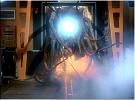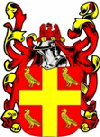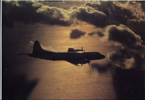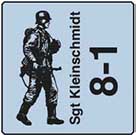ChezDaJez
Posts: 3436
Joined: 11/12/2004
From: Chehalis, WA
Status: offline

|
quote:
Thus deriving "long haul" to mean 1100 mile round trip would be an act of putting words in Richard Frank's text that do not actually appear in said text.
Yeah, you're right. It would be silly to infer they had to fly back 565 miles too. I guess they just had to walk back.
Just a few items concerning the Japanese in their big, comfortable, fully stocked and outfitted base at Rabaul.
quote:
The flames of war erupted in both New Guinea and the Solomon islands in early 1942, with the Japanese invading Rabaul and Kavieng in the Solomon Islands on 14 January 1942, Wewak and Lae/Salamaua in New Guinea on March 9, 1942.
Land troops were provided by the Japanese Army, the South Seas Detachment under General Hori. Air cover for both operations was provided by the JNAF, the JAAF being caught up in the invasions of Malaya, Singapore and Burma. In fact up to December 1942 the JNAF had to provide fighter and strike aircraft to cover both area's, as it was not until then that the JAAF moved into New Guinea in force with the advent of the 11th Sentai, JAAF, on 18 December 1942. So during the critical phase of the Guadalcanal battles from August to November 1942, the JNAF had to not only attack Guadalcanal and the American Support fleet but also mount offensive fighter and bomber sweeps over New Guinea to support Hori's troops fighting on the Kokoda Trail, and at the end of the year, at Milne Bay and Buna. Which proved too much for the small number of Kokutai based at Rabaul.
Opposing the Japanese on New Guinea in early 1942 was a motly collection of RAAF aircraft. Fortunately for them the Battle of the Coral Sea and Guadalcanal burst on the scene before the Japanese could build up their forces in New Guinea, otherwise they would have taken Port Moresby by storm. This gave the newly arrived General Kenney time to organise his forces, the Fifth Air Force being offically created on the 7th August 1942. For the remainder of the New Guinea campaign the Fifth Air Force and the RAAF first fought the JNAF, then the JAAF.
.
The main fighter strip at Rabaul...
quote:
Lakunai was Rabaul's primary fighter strip. It was heavily defended with AA guns, and searchlight units were detached at Raluana Point, near the Matupi causeway on the nearby beach, and on the hills in the Sulphur Creek area. The airfield itself was Y-shaped with both runways exceeding 4,500 feet. Despite volcanic dust which pervaded everywhere, the runways' coral surfaces were smooth and all-weather. At the Northeast end of both runways was a volcanic hill which constituted a formidable obstacle. Square protective revetments were placed alongside the runways, with most of the complex' buildings and barracks located at the southern field's end. Japanese maps and documents of the era refer to the field (in Kana) as 'Rabinjikku' - or 'Rabaul lower'. Vunakanau was known as 'Rabaul upper'. Lakunai was mostly used for smaller aircraft as the volcano, which so dominated the landscape, was considered dangerous for fully-loaded bombers to avoid.... Volcanic dust at Lakunai played havoc with the engine's air filter which had to be regularly removed and cleaned.
Yep, lovely Rabaul, where nothing disturbs the idyllic lifestyle of the Japanese pilots.
quote:
Thursday, 1 October, 1942
In New Guinea, B-17s and P-400s pound forces and communications in the Owen Stanley Range, hitting Menari, Kagi, Myola Lake, the Kokoda area, Wairopi bridge, and the Buna-Wairopi trail; and the 71st Bombardment Squadron (Medium), 38th Bombardment Group (Medium), moves from Bredden Field, Australia to Port Moresby with B-25s.
Friday, 2 October, 1942
In the Owen Stanley Range of New Guinea, A-20s bomb and strafe Japanese campsites around Myola and hit several trails in the area, while P-400s strafe bridges at Sirorata and Wairopi and a village Northeast of Wairopi. B-17s bomb shipping and airfield at Rabaul on New Britain Island, Bismarck Archipelago.
Saturday, 3 October, 1942
In New Guinea, A-20s bomb and strafe Efogi and Myola Lake, P-40s strafe the Efogi-Buna trail, B-25's hit a bridge at Wairopi, and a lone B-17 bombs a camp on the Kumusi River.
Sunday, 4 October, 1942
In New Guinea, P-40s strafe forces and occupied areas at Myola Lake, Kokoda, Wairopi, Yodda, and Buna; a US reconnaissance party from the 126th Infantry Regiment, 32d Infantry Division reaches Jauri, completing a reconnaissance of the Kapa Kapa-Jauri trail, which is found to be difficult but practicable for use as a route in a contemplated offensive against the Buna-Gona area.
Monday, 5 October, 1942
In New Guinea, B-25s attack a convoy off Buna; A-20s hit AA positions at Sanananda Point and bomb the village of Sanananda; B-17s bomb airfields at Buna and also hit airfields at Rabaul on New Britain Island.
Tuesday, 6 October, 1942
In New Guinea, Fifth AF aircraft complete the movement of the reinforced Australian 18 Brigade to Wanigela on the peninsula between Dyke Acland and Collingwood Bays on the East coast of Papua; this is part of the move aimed at capture of the Buna-Gona area.
Thursday, 8 October, 1942
In New Guinea, B-25s bomb the Buna area while A-20s pound the Buna-Kokoda trail; the Japanese withdrawal Northeast across the Owen Stanley Range slows as they prepare to make a stand at Templeton's Crossing North of Myola.
Friday, 9 October, 1942
30 B-17s pound numerous targets at Rabaul, New Britain Island. In New Guinea, 14 B-25s hit the airfield at Lae; and HQ 49th Fighter Group moves from Darwin, Australia to Port Moresby
Saturday, 10 October, 1942
B-17s pound Rabaul and nearby Lakunai airfield on New Britain Island. In New Guinea, A-20s hit targets along the Buna-Kokoda trail and, with P-400s, strike villages in the area of Asisi and Sanananda; and the 9th Fighter Squadron moves from Darwin, Australia to Port Moresby with P-40s
Sunday, 11 October, 1942
The 22d Troop Carrier Squadron, Air Carrier Service, Air Service Command, Fifth Air Force, moves from Essendon Airdrome to Garbutt Field, Australia with C-47s.
Monday, 12 October, 1942
In New Guinea, A-20s hit the village of Isivita and targets on the trail near Wairopi; B-25s bomb Buna, Wairopi bridge, and targets along the Buna-Kokoda trail. The 64th Bombardment Squadron (Heavy), 43d Bombardment Group (Heavy), arrives at Fenton Field from Iron Range, Australia with B-17s.
Tuesday, 13 October, 1942
B-17s again pound Rabaul, New Britain Island, concentrating on Vunakanau and Lakunai Airfields. In New Guinea, a B-17 bombs Buna; and the 6th Troop Carrier Squadron, 63d Troop Carrier Group, arrives at Port Moresby from the US with C-47s. The 65th Bombardment Squadron (Heavy), 43d Bombardment Group (Heavy), moves from Torrens Creek to Iron Range, Australia with B-17s.
Wednesday, 14 October, 1942
In New Guinea, B-25s attack Lae, a bridge 40 miles (64 km) N of Port Moresby, and the area of the Wairopi bridge; on the Kokoda trail Japanese offer fierce resistance to Australians pushing NE in the vicinity of Templeton's Crossing; and Fifth AF aircraft begin flying a force of Australians and Americans to Wanigela.
Thursday, 15 October, 1942
In New Guinea, A-20s and P-40s pound forces South of Templeton's Crossing and at Popondetta; B-25s bomb Salamaua and hit targets in the Owen Stanley Range and in the area around the bridge at Wairopi. A single B-17 attacks shipping near Treasury Islands, Solomon Islands.
Friday, 16 October, 1942
In New Guinea, A-20s and B-25s hit the village of Pawaia, trails in the Kokoda area, the Buna-Kokoda trail, and villages at the mouth and along the Mambare River; and B-25s also bomb the Mubo-Salamaua trail. B-17s bomb airfield at Rabaul, New Britain Island and attack targets in the Solomon Islands, including the airfield at Buin on Bougainville Island, and shipping off Moila Point and the Shortland Islands.
Saturday, 17 October, 1942
The 403d Bombardment Squadron (Heavy), 43d Bombardment Group (Heavy), moves from Torrens Creek to Iron Range, Australia with B-17s
Sunday, 18 October, 1942
B-17s attack shipping and aircraft in the Faisi area in the Shortland Islands, Solomon Islands, schooners and buildings at Lorengau on Manus Island, Admiralty Islands, Kahili Airfield, and shipping off Kahili, Pupukuna Point, and Buin on Bougainville Island. In New Guinea, B-25s hit Wairopi bridge in the Owen Stanley Range, the village of Mubo, and the dock and occupied area on Pilelo Island; the Fifth AF completes the air movement of most of the 128th Infantry Regiment, 32d Infantry Division, to Wanigela; and the 39th Fighter Squadron, 35th Fighter Group, moves from Townsville, Australia to Port Moresby with P-38s.
Wednesday, 21 October, 1942
B-25s hit Luscan Harbor on the South coast of New Britain Island
Friday, 23 October, 1942
A-20s bomb and strafe Deniki and Deniki-Kokoda trail in New Guinea. B-17s thoroughly pound shipping at Rabaul on New Britain Island. HQ 19th Bombardment Group (Heavy), which has been fighting since 8 December 1941, begins a movement from Mareeba, Australia to the US
Saturday, 24 October, 1942
In New Guinea, B-25s hit Lae Airfield; and organized Japanese resistance on Goodenough Island ceases.
Sunday, 25 October, 1942
13 B-17s bomb shipping at Rabaul, New Britain Island. In New Guinea, A-20s bomb and strafe the Isurava-Kokoda trail, the W bank of the Kumusi River, and the area North of Asisi as Australian ground forces push toward Kokoda in the Owen Stanley Range; and HQ 38th Bombardment Group (Medium) and the 405th Bombardment Squadron (Medium) move from Townsville, Australia to Port Moresby with B-25s. The 93d Bombardment Squadron (Heavy), 19th Bombardment Group (Heavy), begins a movement from Mareeba, Australia to the US.
Monday, 26 October, 1942
In New Guinea, B-25s hit Salamaua and the airfield at Lae; A-20's, escorted by P-40s, bomb and strafe trails in the Missima-Kaile-Deniki area.
Tuesday, 27 October, 1942
In New Guinea, A-20s hit trails in Southeast Papua around Alola, Isurava, and Abuari; P-39s escort Royal Australian Air Force (RAAF) Hudsons in strike against small craft at Ferguson Island in the D'Entrecasteaux Islands.
Wednesday, 28 October, 1942
B-17s pound shipping in the harbor at Rabaul, New Britain Island, while B-25s bomb the airfield on Gasmata Island off the South coast of New Britain Island.
Thursday, 29 October, 1942
A-20s hit the Isurava-Deniki and Abuari-Kaile trails, New Guinea; B-17s attack shipping in BougainvilleStrait between Buin, Bougainville Island and Faisi Island, Shortland Islands. The 71st Bombardment Squadron (Medium), 38th Bombardment Group (Medium), moves from Townsville, Australia to Port Moresby with B-25s.
Friday, 30 October, 1942
B-17s bomb harbor and shipping at Buin, Bougainville Island.
Saturday, 31 October, 1942
In New Guinea, A-20s bomb and strafe Nauro and the area to N; B-25s strafe supply trucks Southeast of Gona. B-17s bomb shipping at Rabaul, New Britain Island, and in Buin, Bougainville-Faisi Island-Tonolai, Bougainville Island area.
So while the Japanese flyboys are away from their party town and goofing off down at Henderson, ole' Kenney and his 5th AF boys are crashing the party back at Rabaul. Don't you just hate it when uninvited visitors drop in unannounced?
Chez
< Message edited by ChezDaJez -- 9/17/2005 12:31:50 PM >
_____________________________
Ret Navy AWCS (1972-1998)
VP-5, Jacksonville, Fl 1973-78
ASW Ops Center, Rota, Spain 1978-81
VP-40, Mt View, Ca 1981-87
Patrol Wing 10, Mt View, CA 1987-90
ASW Ops Center, Adak, Ak 1990-92
NRD Seattle 1992-96
VP-46, Whidbey Isl, Wa 1996-98
|
 Printable Version
Printable Version



















 New Messages
New Messages No New Messages
No New Messages Hot Topic w/ New Messages
Hot Topic w/ New Messages Hot Topic w/o New Messages
Hot Topic w/o New Messages Locked w/ New Messages
Locked w/ New Messages Locked w/o New Messages
Locked w/o New Messages Post New Thread
Post New Thread